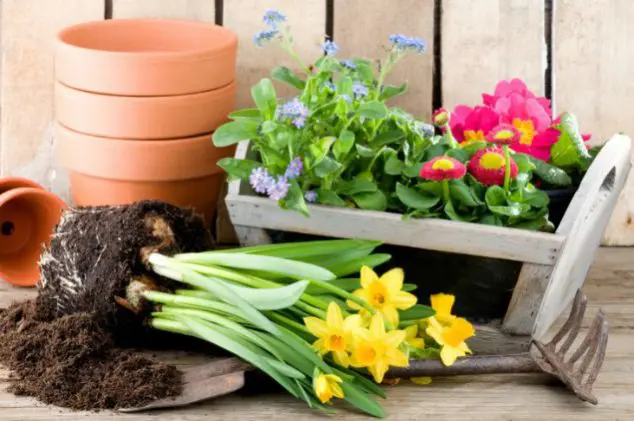It seems as if winter has been here forever, but we’re barely halfway to spring. Whether it’s been snow, rain, or just colder temperatures where you live, winter weather can wreak havoc on your yard landscaping. Discover the hidden techniques and expert tips to maintaining a beautiful lawn throughout the winter season. From proper watering schedules to essential fertilization methods, this article uncovers the secrets that will keep your lawn thriving even in the harshest winter conditions. Taking some time now to see how everything is holding up, and resolving any problems before they get worse, will get you starting on curing your cabin fever with springtime beauty.
The Basics of Mid-Winter Care For Your Lawn And Garden
Winter Lawn Care Tips
In this article, we will guide you through a comprehensive plan to prevent winter lawn damage and ensure your lawn stays healthy and beautiful all season long. From understanding the causes of winter lawn damage to effective weed control techniques, we’ve got you covered. We’ll also delve into the importance of aeration and how to choose the right winter-specific fertilizer. Plus, we’ll provide expert advice on proper lawn care maintenance and share tips for maintaining a healthy lawn through the winter months. By the end of this article, you’ll have the knowledge and tools to keep your lawn green and vibrant throughout the colder months. Don’t let winter ruin your beautiful lawn – it’s time to take action and start protecting it today!
Snow On The Lawn?
The lawn is still out there, even if it’s hidden by snow, and there’s not much to do if it is. But do pick up any branches that may have fallen as well as anything you forgot to remove earlier, like kid’s toys, hoses, or patio furniture. If you can avoid walking on snow-laden or soggy soil, that’s a good idea, too. Putting pressure on frozen lawns can kill turfgrass crowns and leave you with bare spots, though anything that weighs down and compresses soil will cause problems you’ll have to fix later. If you don’t have snow yet, or it melts briefly, below are a few more lawn care tips that will help your landscape survive the season.
Rake.
Clear the lawn of fallen leaves and debris that harbor insects and disease. However, don’t rake so hard that you take up the grass, too.
Mow.
Depending upon where you live, your grass will be growing more slowly or be entirely dormant. Don’t neglect mowing, though, and leave clippings where they are to serve as soil-enriching mulch. (Cool season grasses can harbor snow mold if you don’t mow them properly.)
Aeration.
Aeration is a process that involves perforating the soil with small holes to allow air, water, and nutrients to penetrate deep into the root zone. This helps to alleviate soil compaction, which can occur over time due to foot traffic, heavy machinery, or even just the natural settling of the soil. When the soil becomes compacted, it restricts the flow of air, water, and nutrients to the grassroots, hindering their growth and overall health.
During winter, when the ground may be frozen or covered in snow, the need for aeration becomes even more critical. The freezing temperatures and harsh weather conditions can further contribute to soil compaction, making it even harder for your lawn to thrive. By aerating your lawn before winter sets in, you create channels for air, water, and nutrients to reach the grassroots, ensuring they stay healthy throughout the colder months. Not only does aeration improve the overall health of your grass, but it also helps to prevent yellow patches and other damage that can occur during winter.
Water if necessary.
Should I water my lawn in winter? Well, winter doesn’t give you a free pass to stop watering but it depends on the water. If your lawn isn’t getting at least an inch of water a week, it won’t be able to protect itself. It might sound counterintuitive, but the root zone needs to retains enough moisture to weather freezes.
Should I fertilize my lawn in the winter?
The answer depends on where you live. When people say winter lawn fertilizer, they are usually referring to a winterizer which is applied late in fall to help the grass take in a good dose of nitrogen and potassium. It stores this over the dormant period and recovers more quickly in the spring. If you live in an area that gets colder in the winter, your grass will be dormant and does not require fertilizer during that time.
Effective Weed Control Techniques.
One of the most crucial and basic steps in weed control is regular and proper lawn maintenance. By mowing your lawn at the recommended height for your grass type, you promote a dense and healthy turf that discourages weed growth. Additionally, removing any weeds that do sprout as soon as you spot them can prevent them from spreading and establishing deep roots.
Another effective technique is applying pre-emergent herbicides. These treatments form a protective barrier on the soil surface, preventing weed seeds from germinating. Timing is crucial with pre-emergent herbicides, as they need to be applied before weed germination occurs. Be sure to follow the instructions on the product label for the best results.
Post-emergent herbicides can offer a solution if weeds have already taken root in your lawn. These products are designed to kill existing weeds and are available in various formulations, including liquid sprays and granules. It’s important to choose a herbicide that targets the specific types of weeds you’re dealing with and follow the instructions carefully to avoid damaging your grass.
Notice Any Signs of Disease.
Lastly, disease monitoring is crucial for maintaining a healthy lawn through winter. Keep an eye out for signs of snow mold, which appears as circular patches of discolored or dead grass covered in a white or pinkish fungus. If you notice any signs of snow mold or other lawn diseases, consult with a lawn care professional who can provide guidance on appropriate treatments or prevention methods.
Pruning Tips
While your perennial plants are dormant during winter, it’s the ideal time for cutting back trees with chainsaw. Strong winds and heavy snow can break off branches and injure people and damage property. It’s too dangerous to prune large or high branches yourself, so hire professionals who are experienced and have the necessary insurance.
You can prune trees and shrubs by yourself, but keep in mind that over pruning is stressful and increases a tree’s susceptibility to disease and insects. Prune just what’s necessary, like broken, diseased, and damaged branches, branches that are crossing each other or growing inward, and branches growing the wrong way. Keep your pruning and trimming to just a quarter of the branches.
Give Your Flower Beds Some TLC
It’s better late than never protect roots from harsh temperatures that are still to come as well as keep weeds from sprouting later by spreading mulch. Leave space directly around trunks, though, or else the mulch might cause rot.
Start Color for Spring
It might be too late to plant bulbs if you can’t get a shovel in the ground, but they likely won’t last until next year if you don’t do something with them. If you can break through the ground, dig a little deeper when you plant and insulate with straw. Or the easier way is just to plant bulbs in pots inside, and then transplant in the spring or leave them inside to cheer up your décor.
Now’s a great time to start flower and vegetable seeds inside, too. It’s a great project to do with the kids, and fun for everyone to watch as the seedlings grow.
Get Your Gardening Tools Ready
If you didn’t clean and oil your tools before you put them away the last time you used them, spend a cold afternoon taking care of them now while you dream of spring. Use a stiff brush to rout out old dirt, then rinse and dry thoroughly.
If blades are rusty, soak them in a container of vinegar for a day or two and then scrub off the residue with a steel wool pad. Lubricate the pivot points with a little oil, and sharpen blades with a whetstone or knife sharpener. Done!
Conclusion
Learn how to protect your lawn from unsightly yellow patches and irreversible damage during the winter months. This comprehensive guide provides actionable steps and practical advice on proper lawn care techniques. By implementing proper lawn care maintenance practices such as regular mowing, appropriate watering, weed control, and disease monitoring, you can ensure that your lawn remains healthy and resilient throughout the winter months. I hope you find these tips for mid-winter yard care helpful. Have fun out there! If you have any tips or tricks for mid-winter yard care, share them in the comments below. Which were your favorite suggestions for winter lawn care?
Related Posts:
Terraced Gardens: How To Make The Most Of A Slope


